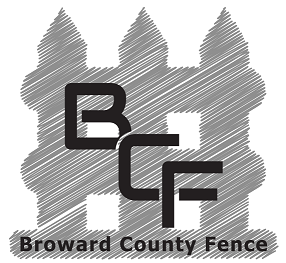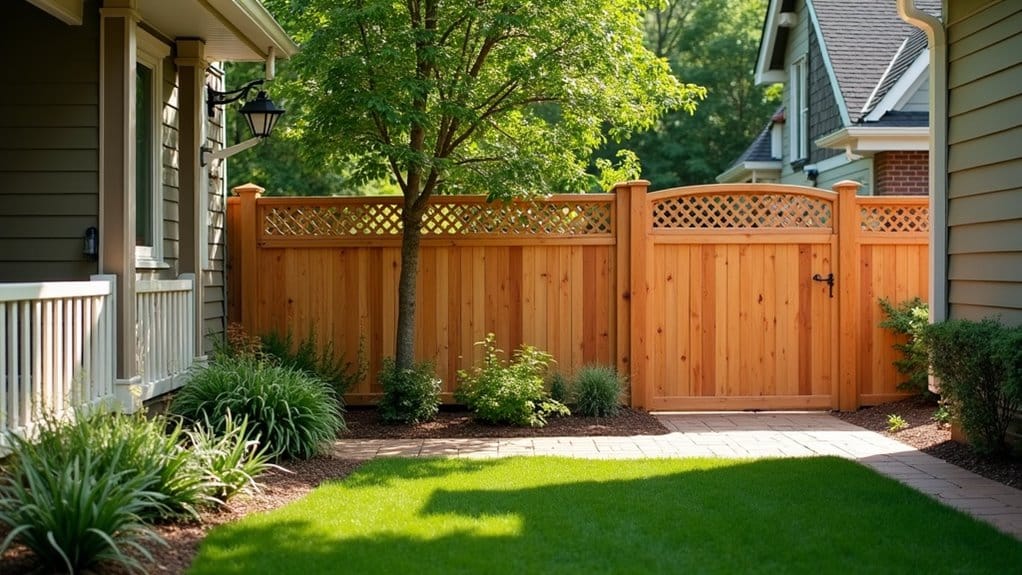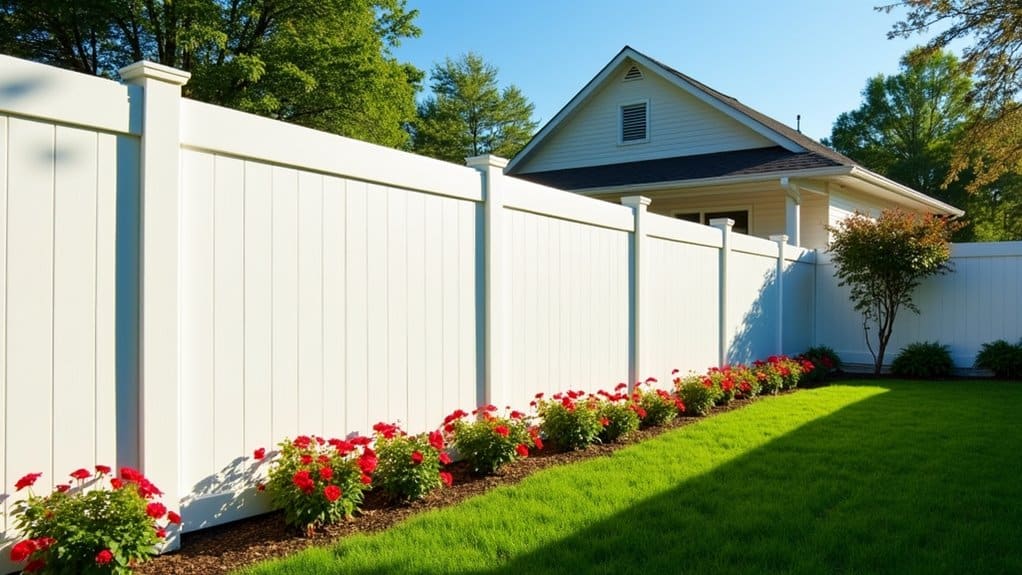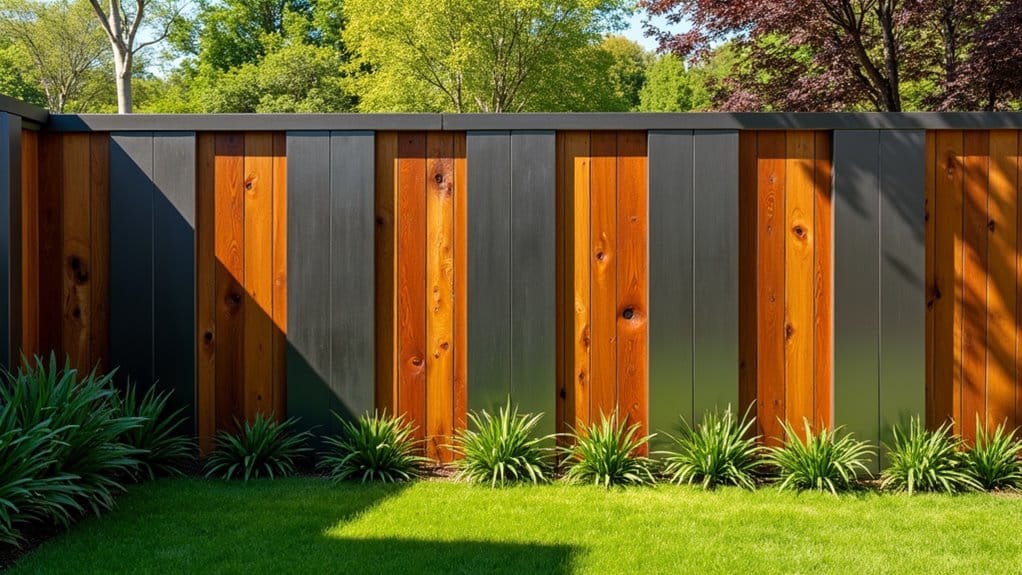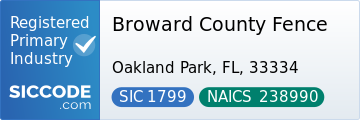For effective DIY fence repairs, you’ll need key tools. Start with post hole diggers—manual ones work well for smaller jobs, while powered augers are great for tougher soil. For cutting, use wire cutters and saws for clean, precise cuts. Fastening tools are also essential; opt for rust-resistant nails and strong screws. To ensure accuracy, have measuring tools like laser levels and measuring tapes on hand. Lastly, don’t forget safety gear like gloves and goggles. Ready to dive into the specifics of each tool?
Key Takeaways
- Use manual diggers or powered augers to easily create deep holes for your fence posts.
- Essential cutting tools include wire cutters, pliers, and saws for shaping wood or metal.
- Fastening tools like fencing nails and deck screws provide strong connections to secure your fence.
- Measuring tools, such as laser levels and measuring tapes, help ensure accurate post spacing and alignment.
- Always wear protective gear like hard hats, gloves, and safety glasses to stay safe during repairs.
Post Hole Digging Tools
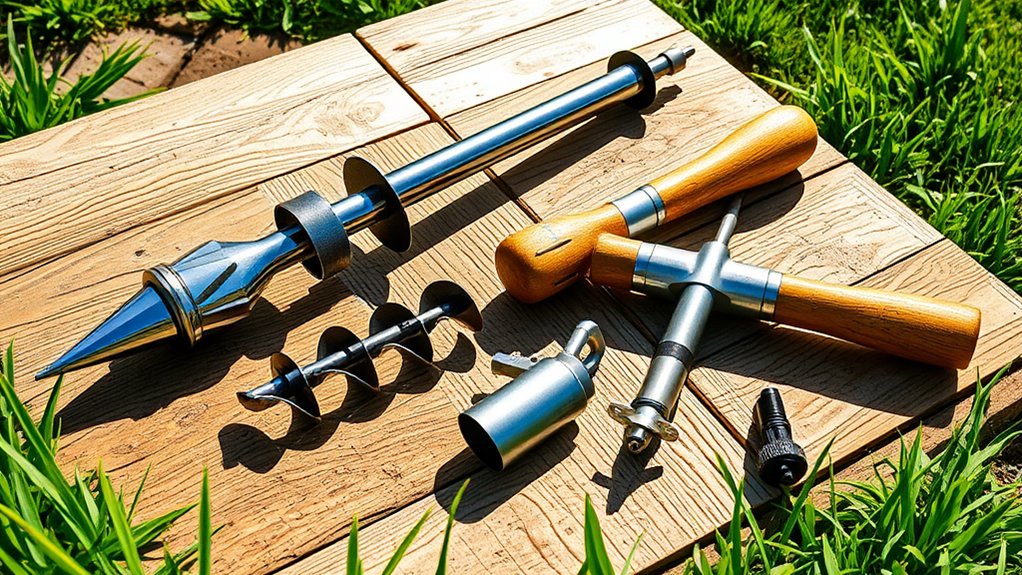
When repairing a fence, the right post hole digging tools are crucial. For small jobs, manual tools are lightweight and easy to use. Blade length can vary significantly, so it’s important to choose a tool that fits the depth you need for your fence posts. For larger projects or tough soil, powered augers are more efficient and can dig deeper. Consider the handle material: fiberglass is insulated, while steel is strong. Look for durable blades made from steel alloys to handle tough conditions. Some tools come with measuring sticks for accurate depth. Prioritize comfort and safety with ergonomic grips and protective gear. Choosing the right tool will make your fence repair much easier.
Cutting and Shaping Tools

For fence repair, using the right cutting and shaping tools is crucial for precise results. Proper tools prevent worsening of fence damage by ensuring that each cut and shape is made accurately. Focus on mastering techniques that ensure accuracy while prioritizing safety. Here’s a look at essential tools and best practices to make your repairs effective and secure.
Essential Cutting Equipment
To ensure a successful fence repair, having the right cutting equipment is crucial.
Start with wire cutters; manual hand pruners are great for thin wires, while heavy-duty bolt cutters can handle thicker ones. Pliers are also important—combination pliers offer both cutting and gripping, while fencing pliers are tailored for wire work. Cutting capacity is particularly important when selecting wire cutters, as it ensures they can handle the specific thickness of wire you are working with.
For wood or metal components, saws, whether manual or powered, are essential. Nippers work well for thinner wires, and a cutting torch is perfect for thicker metal posts.
Equip yourself with these tools, and you’ll be ready for any fence repair.
Techniques for Accurate Shaping
To shape your fence accurately, having the right cutting tools is crucial.
Here are some essential techniques:
- Circular Saw: Ideal for making straight cuts in various materials.
- Jigsaw: Best for cutting intricate designs and curves.
- Miter Saw: Ensures precise angled cuts for perfect joints.
- Sander: Key for smoothing surfaces on wooden panels.
Using these tools effectively will help you achieve the precision you need.
Safety Considerations While Cutting
Cutting tools can simplify fence repairs, but safety is crucial. Start by wearing safety gear: gloves, glasses, ear protection, dust masks, and steel-toed boots.
For safe cutting, ensure your table saw’s rip fence is parallel to the blade to avoid kickback, and set the blade height to no more than 1/4 inch above the material. Always use push sticks and featherboards for narrow cuts, and avoid freehand cutting.
Keep your workspace tidy and maintain good body positioning to reduce injury risk. Regularly check your tools to ensure they’re safe to use. Staying prepared is key to preventing accidents.
Fastening and Securing Tools
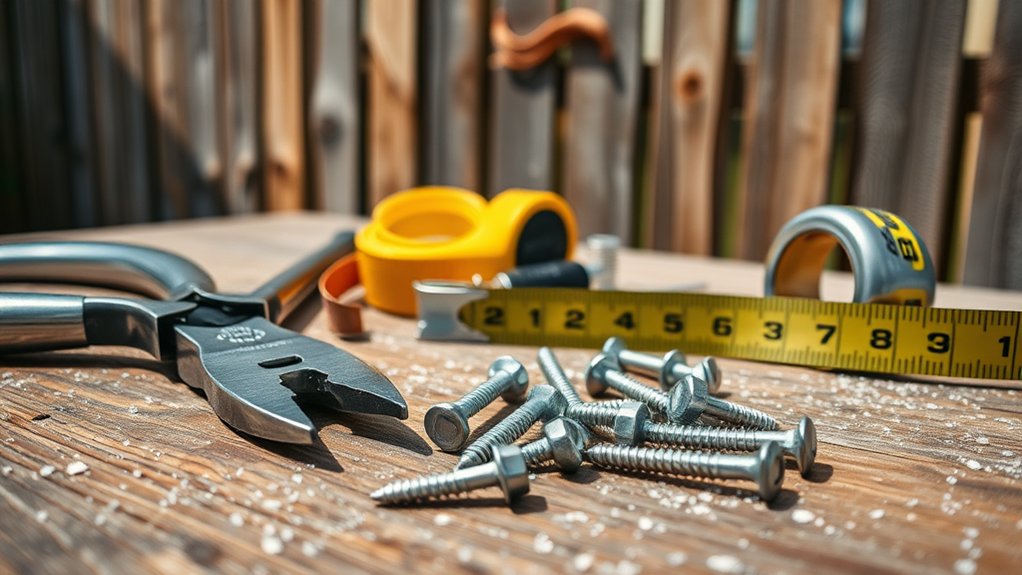
When repairing a fence, having the right fastening tools is crucial for a sturdy and lasting outcome. Here are key fasteners to consider:
- Fencing Nails: Designed to resist rust and corrosion.
- Deck Screws: Provide a stronger hold for wooden parts.
- Galvanized or Stainless Steel Fasteners: Protect against weather damage.
- Specialty Fence Staples: Secure wire fencing without harming the material.
For hammers, a claw hammer is great for general tasks, while a framing hammer is ideal for larger nails.
If you need to take apart materials, a rip hammer works well.
Choose the right tools, and your fence repairs will endure. Additionally, ensure you are aware of local zoning regulations as they can dictate the type of repairs you can undertake.
Measuring and Leveling Tools

Proper tools for fastening and securing your fence are essential, but accurate measurements and level alignments are equally crucial.
Invest in laser levels for long-distance precision and spirit levels for checking vertical alignment. Measuring tapes are perfect for precise post spacing and panel sizes, while string lines help create straight lines and maintain consistent heights.
Use bright stakes or spray paint to mark your fence line before digging. Techniques like grid layouts and taut string lines will ensure uniformity.
Remember to check your alignment regularly during construction to avoid costly mistakes. Keep your tools handy and measurements precise for a successful fence project.
Soil Stabilizing and Foundation Tools
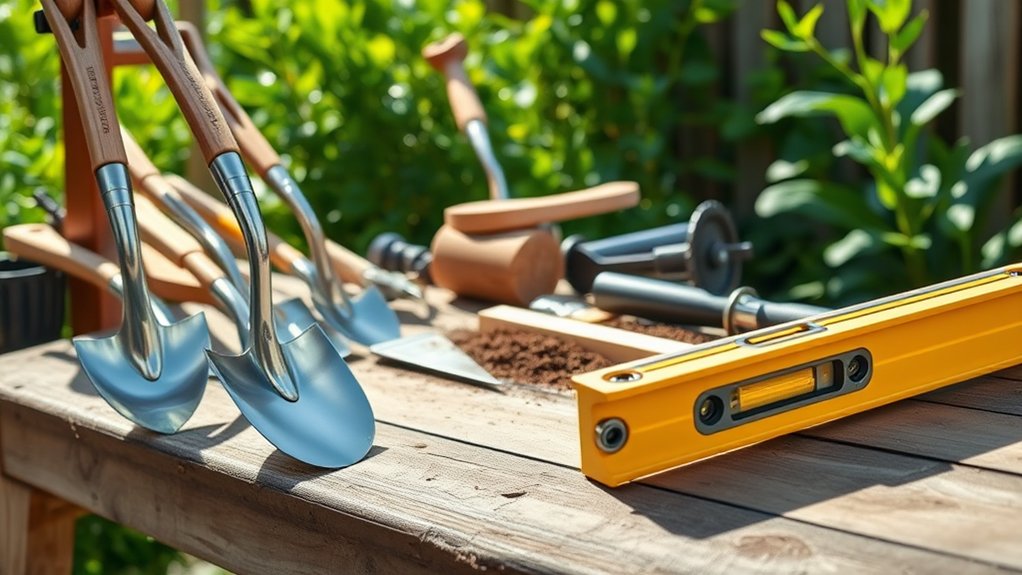
To ensure your fence is strong and stable, investing in soil stabilizing and foundation tools is crucial. These tools help you apply effective techniques for long-lasting results.
Here are some important tools to consider:
- Post hole diggers and manual augers for digging consistent holes.
- Steel push piers that reinforce existing foundations by reaching solid soil.
- Concrete mixers for preparing durable footers on-site.
- Manual tampers to compact soil around posts, minimizing settling.
Wire Handling and Tensioning Tools

When working with wire fencing, using the right tools is crucial for proper tension and stability.
Familiarize yourself with strainers and tensioners, and learn the techniques for tightening wire effectively.
Always prioritize safety to ensure a smooth and secure fence repair.
Essential Wire Handling Tools
Having the right tools is crucial for effective wire fence maintenance and repair.
Here are the essential wire handling tools you need:
- Fence Splicer/Splitter: Ideal for joining or splitting wire during repairs.
- Wire Cutters: Use bolt cutters or tin snips for a clean cut.
- Fence Stretcher: Necessary for stretching and tightening wire after repairs.
- Jake’s Wire Tightener Handle: Makes it easy to maintain proper wire tension.
With these tools, you can confidently handle any wire fence repair, ensuring your fence stays sturdy and secure for years.
Proper Tensioning Techniques
To maintain your wire fence effectively, mastering tensioning techniques is essential. For light-duty projects, hand twisting with gloves and cutters works well.
If you need more control, use pliers for better tension adjustments. For high-tensile or larger fences, wire strainers or tensioning devices are helpful, providing the leverage needed for precise tension.
Aim for a balance: your wires should be tight enough to prevent movement but not so tight that they might break. Regularly check the tension to ensure your fence stays secure and looks good for years. Additionally, metal chain link fences typically have an average lifespan of 25-30 years with proper maintenance, making it crucial to ensure they are well-tensioned and maintained.
Safety Precautions Needed
Before starting any fence repair, prioritize safety. Here’s how to stay safe:
- Wear Safety Glasses: Protect your eyes from flying debris.
- Use Protective Gloves: Avoid cuts, especially from barbed wire.
- Check Your Area: Look for hidden hazards like stumps or holes.
- Inspect Your Tools: Ensure they’re in good shape, with no sharp edges or loose parts.
Stay safe and get the job done right!
Essential Safety Equipment

When repairing a fence, safety is key. Always wear a hard hat to protect your head from falling debris and safety glasses to shield your eyes from flying particles.
Gloves are crucial to prevent cuts and chemical exposure, while sturdy footwear provides traction to help you avoid slips. If you’re working in low-light conditions, a reflective vest can enhance your visibility.
Be ready for emergencies by knowing your procedures and keeping a first aid kit nearby. Clearly mark your work zone and use signs to alert others about the repairs.
With the right safety gear, you can tackle your fence repair project confidently.
Maintenance and Care for Tools
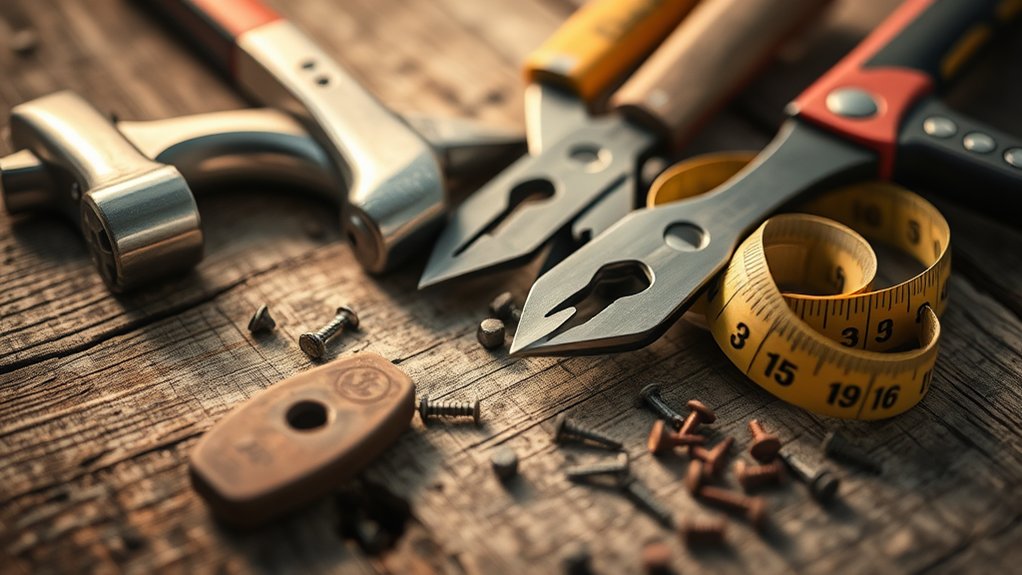
Maintaining your tools is crucial for their longevity and performance during fence repairs. Here are some simple practices to follow:
- Clean off dirt and debris right after use to prevent rust.
- Wipe metal parts with a dry cloth to minimize corrosion.
- Store tools in a dry place to avoid moisture damage.
- Regularly check and sharpen blades for optimal efficiency.
Don’t forget to inspect for wear and tear, and lubricate moving parts as needed.
Frequently Asked Questions
What Are the Best Materials for Building a Fence?
When picking fence materials, think about durability and upkeep. Cedar and redwood are naturally resistant to the elements, making them long-lasting choices. Vinyl is a great option if you want something low-maintenance and customizable. For a sturdy, long-lasting solution, aluminum works well. If you’re on a budget, chain link is affordable but doesn’t provide much privacy. Choose based on your specific needs.
How Do I Maintain My Fence After Installation?
After installing your fence, create a maintenance plan. Regularly clean it, check for any damage, and apply protective coatings. For example, washing off dirt and grime every few months can prevent mold. This simple routine helps your fence last longer and look good all year.
What Is the Ideal Height for a Residential Fence?
The ideal fence height depends on its purpose. For privacy, go for at least 6 feet tall. In front yards, a height of 3 to 4 feet works well, providing a nice balance between looking good and allowing visibility, while also following local rules.
How Do I Choose the Right Fence Style for My Property?
To choose the right fence style for your property, think about both looks and security. A good fence can improve your home’s appearance and increase its value. For example, a picket fence offers charm and keeps pets in, while a privacy fence blocks noise and keeps your yard secluded. Consider what you need most to make the best choice.
What Local Regulations Should I Consider Before Installing a Fence?
Before you install a fence, it’s essential to check local regulations about property lines and permits. Ensure your fence meets height limits and material guidelines to prevent conflicts with neighbors or local authorities. For example, some areas may allow fences up to 6 feet high, while others might have stricter rules. Always verify these details beforehand to avoid headaches later.
Conclusion
With the right tools for DIY fence repairs, you can confidently handle any project. A well-kept fence boosts your home’s curb appeal and value. Many homeowners take pride in their outdoor spaces, so don’t hesitate—grab your tools and get started. Your fence and your peace of mind will appreciate it!
